Navigating the Features of Massage Salon Software


Intro
In the bustling world of massage clinics, operational efficiency and customer satisfaction are paramount. As technology keeps evolving, massage salon software emerges as a pivotal tool, merging administrative tasks and client care into a seamless experience. Selecting the right software solution can be overwhelming, especially with the myriad options available today. Understanding the functionalities and benefits of these systems is crucial for decision-makers, IT professionals, and entrepreneurs who strive to enhance their services and operations.
From appointment scheduling to payment processing, each component of massage salon software plays a vital role in managing day-to-day operations. Not only does it streamline processes but it also fosters a welcoming atmosphere for clients. When you consider the relationship between efficiency and satisfaction, investing in specialized software doesn't merely seem advantageous; it becomes essential.
As this article unfolds, we will dissect various aspects of massage salon software, examining not just the features that set them apart but also comparing competitors and understanding pricing structures. This approach ensures a well-rounded view, empowering professionals in the industry to make informed choices. Let's embark on this exploration and uncover how these tools can be transformative in the massage salon landscape.
Intro to Massage Salon Software
In today’s fast-paced world, running a massage salon without the right tools is like trying to swim upstream. Tight schedules, numerous appointments, and varied client needs all collide in this environment. Here’s where massage salon software comes into play, transforming everyday chaos into organized tranquility. This software doesn’t just keep the wheels turning; it achieves better client experiences, enhances operational efficiency, and ultimately boosts financial sustainability.
Understanding this landscape is crucial for decision-makers, IT professionals, and entrepreneurs; they need to know how to select a system that fits their unique salon requirements. Given that many salons face common challenges—like missed appointments or complicated billing processes—the software can feel like a breath of fresh air.
Definition and Scope
Massage salon software primarily refers to a suite of tools designed specifically for managing the operations of massage therapy centers. These tools can encompass everything from booking systems and client management to payment processing and inventory controls. The scope of this software is vast and tailored; it caters not only to the traditional spa but also to wellness centers, chiropractic clinics, and even mobile massage therapists.
What makes it a game-changer is how it community different aspects under one umbrella. Aspects like customer relationship management often intermingle with billing and appointments, creating a seamless flow that enhances the salon's operational integrity. One could liken it to a conductor of a symphony ensuring every note hits the mark. In simpler terms, if you’re involved in the massage business, having the right software is not just beneficial—it’s essential.
Evolution of Salon Management Tools
Historically, salon management tools have undergone a considerable transformation. Initially, these tools were rudimentary—think paper ledgers and sticky notes plastered around the reception desk. These would often lead to missed appointments or scheduling conflicts, and ultimately client dissatisfaction.
With the rapid advancement of technology, software solutions nowadays are more robust and multifaceted. The introduction of online booking was revolutionary. Clients, instead of having to call in, can now schedule their sessions at any hour of the day from a computer or phone. This greatly reduced no-shows and escalated client engagement.
Moreover, integrating payment options has become a norm rather than an exception. Virtually all contemporary software has facilitated electronic payments, thus freedom from the hassle of cash transactions. This shift has been essential not just in saving time but also in creating a more favorable client experience.
Technological enhancements like cloud capabilities ensure salon owners can access their data on-the-go. Mobile apps allow clients to access appointment schedules, promotions, and even health forms directly from their devices, further streamlining management processes.
The evolution of massage salon software is not merely about staying modern but also being prepared for the future where customer expectations are continuously rising. Understanding these factors is vital for salon professionals as they aim to elevate their services.
Core Features of Massage Salon Software
Massage salon software is the backbone of modern day spa management, streamlining operations and enhancing the customer experience. When selecting a software solution, it’s imperative to examine its core features that directly contribute to both efficiency and client satisfaction. As the industry evolves, having the right tools can mean the difference between a thriving business and one that languishes in inefficiency.
Appointment Scheduling
In this fast-paced world, time is everything. Appointment scheduling features allow clients to book sessions online, view availability in real time, and receive automated reminders. This not only cuts down on no-shows, but also allows clients to feel in control of their bookings without needing to call in during business hours. The frictionless nature of online scheduling meets the expectations of a clientele that’s always on the go.
Using a system where clients can book additional services if available during their selected time slot can drive revenue. For instance, if a client books a massage, they could be prompted to add a facial at a discounted rate. This adds value while optimizing the salon's appointment calendar.
Client Management
Understanding your clients is fundamental to providing personalized services. Client management features in massage salon software help in storing vital client information such as preferences, health concerns, and previous service history. This data collection allows for tailored marketing strategies and improved service delivery.
Imagine a therapist being able to access a client’s favorite treatment or any past allergies before the session begins. Integrating this type of information not only fosters better client relationships but also ensures that therapists can provide the best possible service.
Moreover, follow-up communications can also be automated. Sending a thank you message or a special offer can enhance customer loyalty and keep your salon top of mind amongst the competition.
Payment Processing
When it comes to massage salons, accepting payments should be seamless. Payment processing systems need to handle various payment methods, from credit cards to mobile wallets. An intuitive point-of-sale solution ensures that transactions are quick and easy for both staff and clients.
Moreover, integrated payment features can facilitate a variety of transactional activities such as issuing refunds or gifting services. For example, a client might choose to pay for a friend's session as a birthday gift. Such conveniences enhance the overall experience and can encourage referrals.
Inventory Management
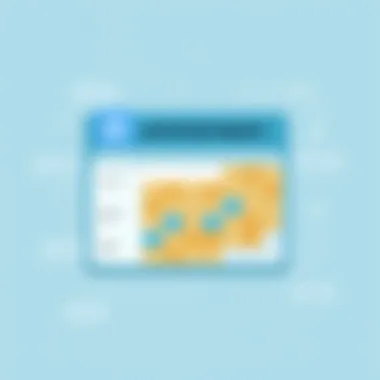
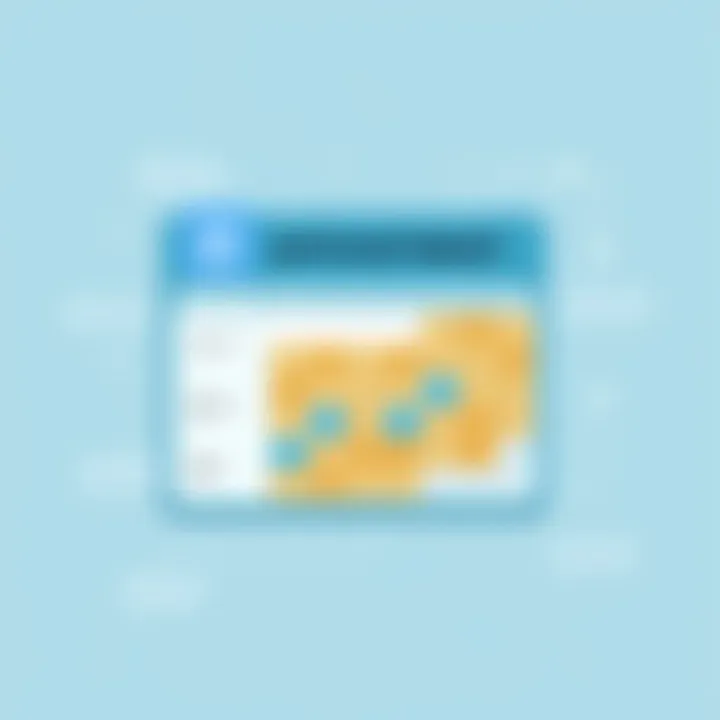
Keeping track of oils, lotions, and other supplies is no small task. Ideally, good massage salon software should include robust inventory management features that enable salon owners to track usage and streamline restocking processes. By automating inventory checks, managers can avoid last-minute supply shortages that might disrupt service delivery.
For instance, consider the scenario where a specific massage oil sells out right before a peak weekend. With proper inventory management, alerts can be set up to notify staff when supplies reach a certain level, ensuring that the salon is always stocked up and ready to pamper clients.
Reporting and Analytics
Knowledge is power and reporting features within massage salon software offer valuable insights into the business's performance. A solid reporting function can provide data on booking trends, service popularity, and financial performance.
For example, a salon might discover that evening appointments are consistently overbooked, prompting them to consider extending hours or hiring additional staff during peak times. The right analytics can guide strategic decisions and help align services with market demand, ultimately driving growth for the salon.
Benefits of Implementing Massage Salon Software
In today's fast-paced world, the importance of efficient systems in businesses cannot be overstated. Massage salons, just like any other service-oriented establishment, can gain immensely from implementing specialized software. This section explores the pivotal advantages that arise from these systems, emphasizing specific elements that contribute to operational efficiency, enriched client experience, and precise financial management.
Improved Operational Efficiency
Operational efficiency in a massage salon translates to getting more done with fewer resources, ultimately elevating the quality of service offered. With software tailored for salon management, menial tasks such as appointment scheduling, inventory checks, and employee management can be automated. This approach not only saves time but also reduces the likelihood of human error.
For instance, consider the task of scheduling appointments. A software solution can seamlessly handle bookings, send reminders, and manage cancellations, allowing staff to focus on delivering exceptional massages rather than juggling schedules. When the behind-the-scenes operations run like a well-oiled machine, the overall productivity of the salon significantly increases.
Enhanced Client Experience
Client experience is the lifeblood of any service industry, and massage salons are no exception. Enhancements in client experience can be categorized into unique subcategories, particularly Personalized Services and Follow-up Communication.
Personalized Services
Personalized services in the context of massage salons refer to tailoring treatments to meet each client’s specific needs and preferences. This is more than just adjusting pressure during a massage; it encompasses understanding the client’s history, preferences, and even mood.
A robust software system enables salons to gather vital information about clients, such as their previous treatments, allergies, and preferences. By keeping this data at hand, therapists can more accurately customize services, reinforcing a sense of care and attention. This not only enhances the satisfaction of existing customers but also fosters loyalty, as clients are more likely to return when they feel understood and valued.
- Key Characteristic: The ability to customize and track treatments individually makes personalized services a beneficial choice.
- Unique Feature: Some advanced systems even utilize algorithms that recall past sessions and automatically suggest treatments based on previous visits, which adds an element of sophistication to client interactions.
Follow-up Communication
Follow-up communication plays a crucial role in maintaining a strong relationship with clients post-appointment. This involves engaging with clients after their visits to gather feedback or remind them about scheduling their next session.
A feature of massage salon software that enables automated follow-up messages can transform client rapport. Clients appreciate a quick message thanking them for their visit or reminding them about the benefits of regular treatment for stress relief or muscle recovery.
- Key Characteristic: Consistency in communication strengthens client relationships and gives a professional touch to the service.
- Unique Feature: Sending tailored messages based on treatment history can further personalize the client’s experience, offering recommendations or special promotions that cater to their specific needs.
Accurate Financial Tracking
In any business, understanding the financial landscape is crucial. In massage salons, accurate financial tracking is essential for holding the reins on expenses and revenues alike. Massage salon software typically includes features that allow for live tracking of income from services and products, including detailed reporting on sales trends and identified areas for improvement.
These systems can generate comprehensive reports that facilitate better budgeting and financial planning. Business owners can evaluate which services or products are most profitable and adjust accordingly, ensuring that every facet of the operation is financially sound. Moreover, easy-to-access data helps in preparing tax documents, as all the necessary information can be readily compiled through the software.
Implementing effective software for financial tracking supports long-term sustainability and planning, which is what every salon operator garners for, opening doors to future growth and innovation.
"In the realm of wellness and beauty, efficiency and ease pave the way for better client relationships and enhanced profitability."
In summary, the implementation of massage salon software offers a plethora of benefits, with improved operational efficiency, personalized client services, and thorough financial tracking leading the charge. These innovations create a ripple effect in operations, culminating in a service that not only meets but exceeds client expectations, ultimately positioning the salon for ongoing success.
Challenges in Selecting the Right Software
Choosing the right massage salon software can feel like navigating a maze. The market is filled with numerous options, each boasting its own set of features, but not all will mesh well with your salon's specific needs. It’s essential for salon owners and management to recognize the importance of this selection process. Why? Because the right software can enhance operational flow, streamline client interactions, and ultimately uplift the bottom line. On the flip side, poor software choices can lead to wasted time, frustration, and financial strain.
Cost Considerations
When delving into software options, cost is often the first hurdle. It’s not just about the sticker price on the subscription. You'll want to take a closer look at potential hidden fees, such as transaction costs, maintenance expenses, and training costs.
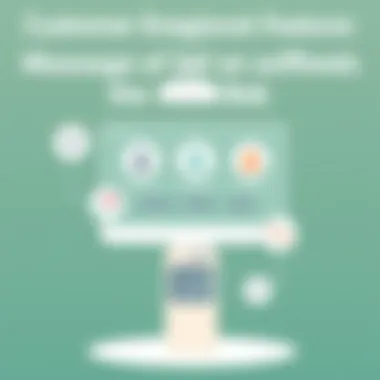
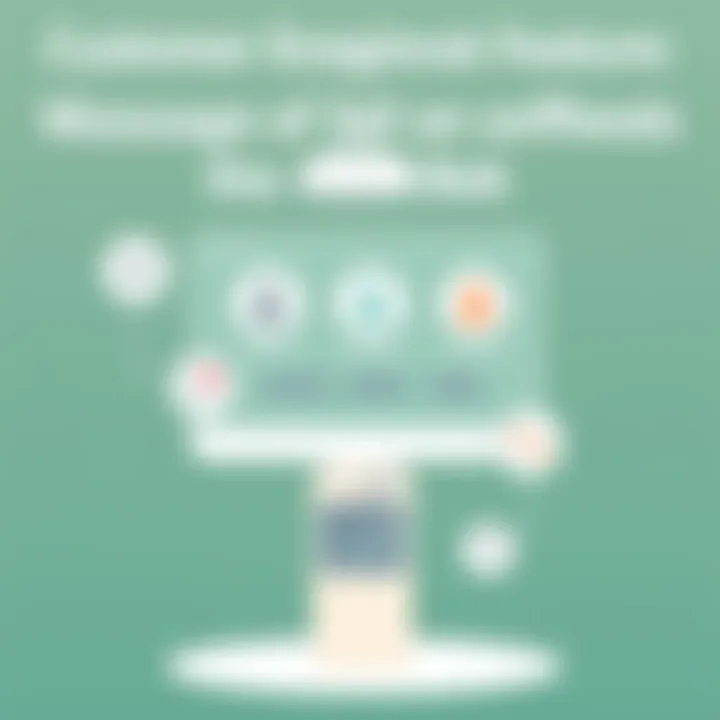
- Initial Investment: Look closely at the upfront costs. Some software might have a low starting price but could come with higher long-term expenses.
- Monthly Fees vs. One-Time Purchases: Decide which model suits your budget better. Some software operates on subscriptions, where you pay monthly, while others might require a hefty one-time fee.
- Total Cost of Ownership (TCO): This includes all ongoing and hidden fees. Be sure to gather all details to make a complete picture of what you’ll be financially committing to.
Next, consider the return on investment. Often, you can justify a higher software cost if it translates into operational efficiencies or increased customer satisfaction, which leads to repeat business.
Integration with Existing Systems
Another critical element in the decision-making mix is how well the new software integrates with existing systems. Many salons already use tools for accounting, booking, or marketing, and a software solution that doesn’t play nice with these tools can lead to chaos.
- Data Migration Challenges: Transitioning to a new software demands careful planning for how data from the old system will migrate. Sometimes, transferring client details and appointment history can be a headache if not handled correctly.
- Compatibility Issues: Check if the software is compatible with your existing hardware and other systems. For example, does it work well with the accounting software you currently use, like QuickBooks?
- Training Requirements: There’s often a learning curve involved. Staff training is necessary, especially if there’s software that doesn’t sync seamlessly with current tools.
Selecting equipment that can talk to each other without much fuss will save you headaches down the road.
Scalability and Future Needs
It's easy to get caught up in your current needs when selecting software, but thinking ahead is paramount. The software should not just meet today’s demands but also grow alongside your business.
- Future Features: Consider what features may be beneficial as your salon expands. You might only need basic appointment scheduling now, but what about online booking or loyalty programs later?
- Growth Potential: If you plan to expand, think about how the software can accommodate multiple locations or an increased client base without crumbling under pressure.
- User Experience Overhaul: As trends evolve, user expectations tend to shift. A system that can adapt to these changes—like adding AI-driven recommendations for services—can set you apart from the competition.
"The challenge of investing in software isn't just about meeting current needs; it's about aligning with your vision for growth in the ever-evolving landscape of salon management."
In summary, navigating the waters of massage salon software selection involves careful consideration of cost, compatibility, and future growth potential. Taking the time to understand these challenges can lead to smart decisions that pay dividends in operational efficiency and enhanced client experiences.
Industry Trends Influencing Software Development
Understanding the current industry trends is crucial for anyone looking to invest in massage salon software. These trends not only shape the market but also guide practitioners toward better decision-making regarding software selection. With rapid technological advances, salon owners now have a plethora of options to enhance their operations and client satisfaction.
Cloud-Based Solutions
Cloud-based solutions are transforming how massage salons manage their operations. These platforms allow for real-time data access, meaning that salon owners and staff can access crucial information anytime, anywhere. The importance of this flexibility cannot be overstated: it accommidates on-the-go decision making—be it adjusting schedules to ensure proper staffing levels during peak hours or retrieving client information to enhance service personalization.
Moreover, cloud solutions typically offer cost benefits, reducing the need for extensive local servers and the associated maintenance expenses. Unlike traditional systems that require hefty upfront investments, cloud-based software often operates on a subscription model. This allows salons to allocate budgets more effectively, adapting financial resources as they grow.
"Cloud solutions can streamline operations while simultaneously cutting costs, which is a win-win for any business."
Mobile Accessibility
In today’s fast-paced world, mobile accessibility plays a pivotal role in enhancing client experience and operational efficiency. Salons that embrace mobile technology enable clients to book appointments, manage their profiles, and access loyalty programs right from their smartphones. This not only fosters greater client engagement but also strengthens brand loyalty.
For instance, mobile apps equipped with push notifications serve as constant reminders, ensuring clients never miss an appointment or special promotion. This tech-savvy approach meets the expectations of a generation that values convenience and accessibility, ultimately allowing salons to attract and retain more customers.
Additionally, mobile accessibility also benefits employees. Staff can view schedules, communicate with clients, and manage tasks all from their devices, leading to improved productivity and service delivery.
Artificial Intelligence in Client Management
Artificial Intelligence is becoming an integral player in massage salon software. Its role in client management is revolutionizing how salons understand and interact with their clientele. AI can analyze consumer behavior patterns, preferences, and past interactions, allowing salons to offer personalized recommendations.
For example, a salon that utilizes AI can suggest specific services to repeat clients based on their previous bookings, creating a tailored experience that enhances client satisfaction. This level of customization not only fosters loyalty but also opens up upsell opportunities for the salon.
Furthermore, AI chatbots are increasingly used for handling client inquiries and appointment scheduling outside normal business hours. This seamless service interaction can drastically improve the customer experience, reducing wait times and enabling staff to focus on in-person services.
For further reading on emerging technologies and their implications in service industries, you might find resources on Wikipedia and Britannica useful.
Comparative Analysis of Popular Software Solutions
When selecting the right massage salon software, a thorough comparative analysis can make all the difference. This section will explore various software solutions available in the market, delving into their features, pricing models, and user feedback. Understanding these elements is vital for salon owners and IT decision-makers, as it allows them to match the software to their specific needs and operational goals, ensuring optimal efficiency and client satisfaction.
Features Comparison
User Interface

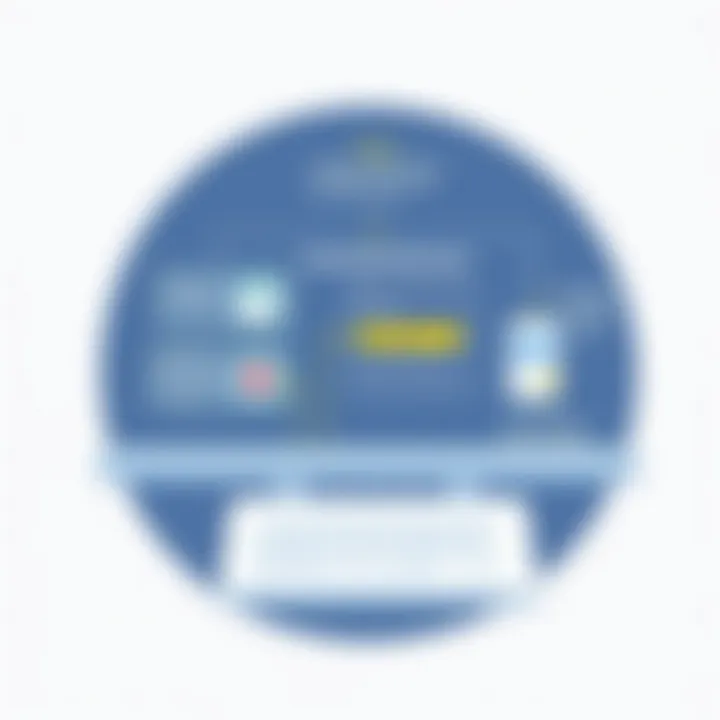
The user interface (UI) is a critical aspect of any software solution. It dictates how easily both salon staff and clients can navigate the system. A well-designed UI can enhance user satisfaction and reduce training time, resulting in a smoother transition for staff. For instance, software platforms like Mindbody and Fresha are often praised for their intuitive layouts. They feature clear navigation paths and eye-catching designs that help engage users from the get-go.
One distinct feature of these UIs is the incorporation of drag-and-drop functionalities, allowing users to quickly schedule appointments or rearrange services without a steep learning curve. This ease of use can set the tone for client experiences as well—when staff can navigate the software effortlessly, clients are likely to receive faster responses and improved service.
However, this aspect isn't without its challenges. While an attractive UI may catch the eye, flashing graphics and overly complex designs could distract or overwhelm users. Thus, it's crucial to find a balance that enhances usability without sacrificing functionality.
Customization Options
Customization options stand at the forefront of contemporary software solutions. As every massage salon operates with its unique set of services and client expectations, the ability to tailor software to fit these specific needs is paramount. Popular solutions often allow salon owners to adapt features, reports, and layouts according to their preferences. For example, Vagaro offers extensive customization in service menus and client profiles, making it easier for salons to personalize user experiences and cater to their clientele effectively.
A key characteristic of customization is the ability to integrate additional functionalities or modules that may not be part of the original software package. This flexibility means salons can scale with the software, adapting to growth and changing industry trends without needing a complete overhaul. Yet, on the flip side, excessive customization can lead to complexity and may require ongoing support and maintenance.
Pricing Models
Pricing models in massage salon software can vary widely—from subscription-based services to one-time purchases. Understanding these different approaches helps salon owners budget effectively. Options range from fixed monthly fees, which provide predictable costs, to pay-per-use models, allowing for flexibility based on service demand. Software like Booker offers tiered pricing structures, catering to salons of all sizes.
User Feedback and Reviews
User feedback serves as a goldmine for prospective buyers. Online reviews can illuminate not only strengths but also potential pitfalls. Platforms like G2 and Capterra compile wide-ranging feedback on massage salon software, offering insights into real user experiences. A high quantity of positive reviews for a particular software solution often indicates reliability and customer satisfaction, while recurring negative points can highlight areas to watch out for.
"User feedback can be the compass that guides your software choice—understanding what works and what doesn't can save substantial time and investment."
By approaching a comparative analysis with a discerning eye, salons can empower themselves to select tools that not only meet their current operational needs but also prepare them for future challenges. Each software’s unique characteristics, costs, and user experiences create a broad landscape that, when navigated wisely, can lead to improved salon efficiency and enhanced client satisfaction.
Future Perspectives on Massage Salon Software
The landscape of massage salon software is changing at a breathtaking pace due to various technological advancements and evolving consumer expectations. Looking ahead, it's vital for salon owners and managers to stay attuned to these shifts, as they hold the keys to unlocking further efficiency and enhancing customer loyalty. By understanding the future perspectives in this domain, decision-makers can better prepare their businesses to adapt and thrive in an ever-competitive market.
Emerging Technologies
Emerging technologies are reshaping how massage salons operate. The adoption of cloud computing has become increasingly popular due to its ability to provide seamless access to software from anywhere. Salons can manage operations while on-the-go, making it easier for staff to respond to client needs promptly. Also, technology like Virtual Reality (VR) is starting to find its way into the industry. Imagine a scenario where a potential client can take a virtual tour of your salon or preview different treatment options, enhancing their decision-making experience.
Moreover, advancements in payment technologies, such as contactless payments and mobile wallets, simplify the transaction process, making it a win-win for both customers and staff.
"The next wave of software solutions will redefine how we serve our clients, with an emphasis on convenience and personalization."
Client-Centric Innovations
At the core of future advancements is an increasing focus on client-centric innovations. Today's clients expect not just a service but an experience that caters to their unique needs. This means that software developers are pushing for systems that allow salon owners to gather and analyze client data more efficiently. By leveraging this data, salons can tailor their offerings, send personalized promotions, and follow up after appointments to gauge satisfaction.
Furthermore, incorporating AI-powered chatbots can significantly improve customer interaction, answering queries in real-time, 24/7. These bots can help facilitate booking appointments, providing information about services, or even upselling additional treatments based on client history—all with the goal of improving the client experience.
In the coming years, expect to see increased integration of wellness programs into software solutions, offering packages that include massage therapy, skincare treatments, and fitness coaching. Such integrative approaches show that salons are not just places for beauty treatments, but holistic wellness hubs.
In summary, understanding these future perspectives allows salons to strategically enhance their operations. As they adapt to emerging technologies and center their innovations on client needs, they will not only bolster operational efficiency but also ensure long-lasting relationships with their clients.
Epilogue
The final segment of this discussion aims to encapsulate the critical insights garnered through our exploration of massage salon software. By distilling the information into actionable recommendations and key takeaways, this conclusion will serve as a blueprint for decision-makers interested in harnessing the advantages of these digital tools.
Summarizing Key Insights
Massage salon software is not merely a tool; it is a transformative asset that can be pivotal in defining the operational landscape of a massage therapy business. In examining its various functionalities, it becomes clear that certain features stand out:
- Appointment Scheduling: Automating bookings cuts down on no-shows and overtime, thereby ensuring that therapists can use their time most effectively.
- Client Management: Tailoring services based on detailed client records creates a more personalized experience and builds loyalty.
- Payment Processing: Streamlining financial transactions, particularly through contactless methods, accords convenience to clients while optimizing cash flow.
- Reporting and Analytics: Understanding client trends, preferences, and financial performance informs strategic business orientations and empowers owners toward more informed decision-making.
Through these points, we've observed that investing in dedicated massage salon software can lead to significant operational efficiencies, enhanced client satisfaction, and put businesses on more stable financial ground.
Final Recommendations for Advisors
For professionals advising massage salon owners, the following recommendations could be of paramount importance:
- Conduct a Needs Assessment: Prior to selecting software, businesses should examine their unique requirements to ensure they choose a solution relevant to their scale and services.
- Encourage Usability Testing: Advising clients to trial software solutions before full implementation will help avoid unnecessary costs and frustration.
- Consider Future Scalability: Choosing software that can grow with the business is crucial. A modular approach might be effective, allowing for additional features as needs evolve.
- Seek User Feedback: Promoting platforms that have received positive feedback from other massage salon professionals fosters confidence in software integrity and performance.
- Stay Updated with Industry Trends: Regularly reviewing advancements in software technology can ensure that businesses remain competitive and well-prepared to adapt to client expectations.
In essence, the effective implementation of massage salon software demands thoughtful evaluation and a forward-thinking approach. The recommendations laid out in this section should serve as guiding principles for advisors as they navigate this crucial decision-making landscape for their clients.







